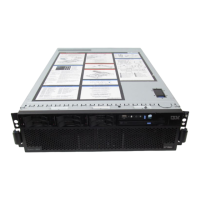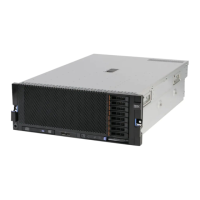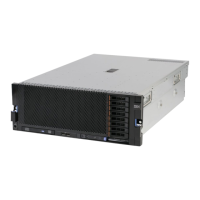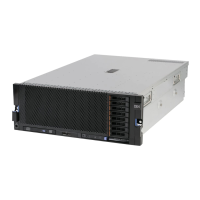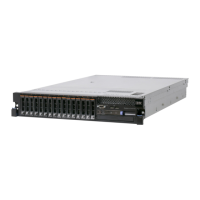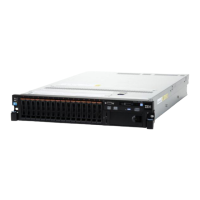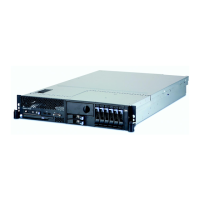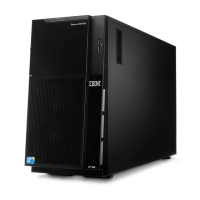Chapter 2. Technology 39
Figure 2-28 shows an IBM eXFlash DIMM.
Figure 2-28 IBM eXFlash DIMM
The IBM eXFlash DIMM modules are installed into DDR3 slots and use memory channels of
the processors. Data transfers between processors and eXFlash DIMMs run directly without
any additional controllers such as PCIe controllers and SAS/SATA controllers. This approach
allows you to significantly reduce latency and improve performance.
Figure 2-29 shows difference in data access between IBM eXFlash DIMMs and other flash
products, such as PCIe SSD adapters and SAS or SATA SSDs.
Figure 2-29 IBM eXFlash DIMMs placement
Key features of the eXFlash memory-channel storage are as follows:
Ultra low write latency with IBM WriteNow technology:
– Less than five microseconds response time
– Less wait time between transactions
– Deterministic response time across varying workloads
– Tight standard deviation on performance
– Consistent performance for highest throughput and speed
High scalability:
– Adds multiple eXFlash DIMMs without experiencing performance degradation
– Offers highest flash storage density within the server
Maximized storage footprint with utilization of existing unused DDR3 slots:
– Increases storage capacity without increasing your servers
– Features industry-standard DDR3 form factor
– Plugs into existing DDR3 slot
The IBM eXFlash DIMM leverages cost-efficient consumer-grade 19 nm MLC flash with
FlashGuard technology, which provides up to ten drive writes per day (DWPD) to meet the
endurance needs of write-intensive and mixed-used application workloads.
DDR3 DIMM
Processor
Platform
Controller
Hub
Solid state drives
SAS/SATA
controller
PCIe High IOPS SSD
adapters
eXFlash DIMM
DDR3 DIMM
eXFlash DIMM
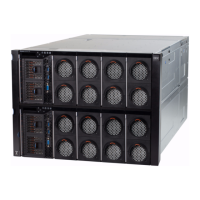
